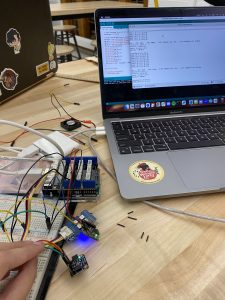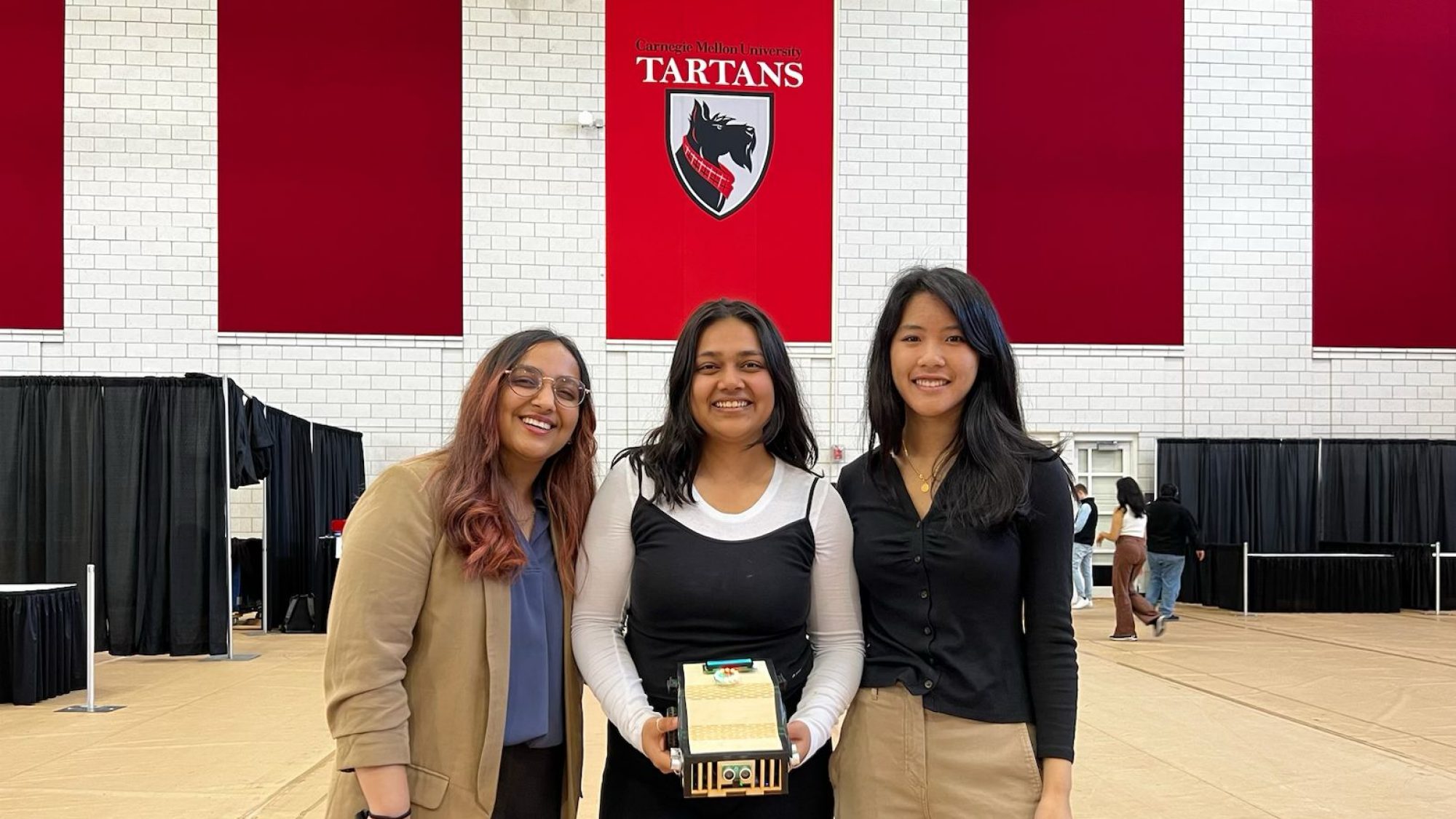This week we worked on receiving data from the sensor array with all the sensors connected to the Arduino. We can now receive readings on levels of CO2, TVoCs, temperature, humidity and CO, NO2 all together while connected on the Arduino. We also defined our communication protocol using JSON payloads to send it from the Arduino to the cloud using the ESP8266 Wi-Fi module. We tested sending a JSON message across the chip to a local web server and were successful, and would like to continue testing this method.

From preliminary testing on our sensors, we find that the ENS160 is a much stronger sensor than the Grove multichannel sensor. It is also sensitive to the carbon dioxide being exhaled due to breathing, so our data collection will have to account for the above. We tested our sensors with an isopropyl alcohol wipe and found that it can detect a rising change in gaseous distribution when objects are moved close to the sensors. We found that using a fan increased the distance at which an object can be detected by the sensors. For our next stage of testing, we will place the sensors inside the robot and determine the distance at which scents can be detected inside the close chamber with the fan running.
This week, we also finally tested out the motion of the robot with the new motor holders. Even though the holders made the motors more secure, it still allowed some movement of the motor axles which caused the robot to turn slightly when instructed to move in a straight line or move a bit unpredictably. We will look into additional attachment methods such as glue or screws to better secure the motors. After this, we can focus more on tuning the motor control code.
We also worked on the Design Report and incorporated feedback from our Design Review presentation to include more stringent design requirements and define our communication protocols across all the subsystems. While working on the report, we defined our subsystems on the basis of our robot planner, control, design and the communication of how sensor data will travel from our robot to our classification system.
